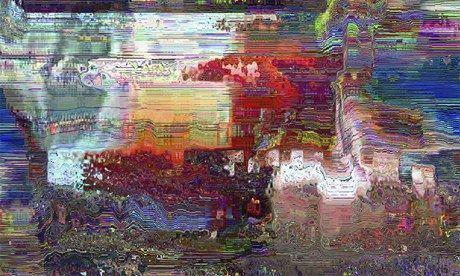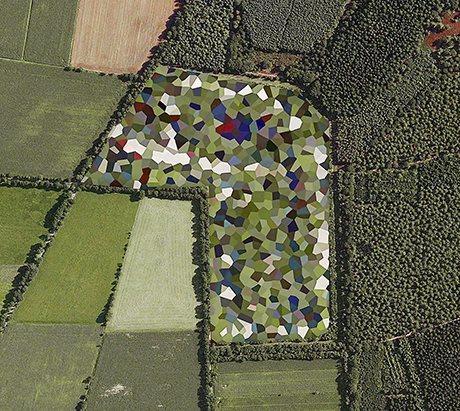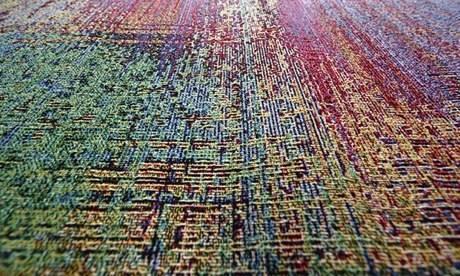


Most of us are familiar with glitches: an unexpected blast of pixelated, hallucinatory jagged lines spreading across our TVs and computer screens. A digital bug fractures the image we’re looking at and, for a frustrating moment, interrupts the film, game or photograph before it returns to normal.
Glitch art takes temporary pixelations, interruptions and glitches and turns them into visually arresting pieces, questioning the forms and traditions of art using digital techniques.
Since July, puzzled commuters on platform one at Bristol Temple Meads train station have been able to see a lone figure of a young school girl in the distance. On closer inspection, the girl fractures and turns into blocks. She is the work of Luke Jerram, a colour-blind artist who creates work on and researches optical illusions and visual perception. The young girl is based on a scan of Jerram’s daughter, Maya, which is also the name of the sculpture.
Maya was scanned using an X-box Kinect and equipment at Machine Vision Laboratory in Bristol. The scan was then pixelated into squares called voxels. Precision-cut aluminum formed the bulk of the sculpture, with more than 5,000 square stickers, measuring 12mm each, carefully applied to the aluminum to create the finished piece.
Mathieu St-Pierre, a Canadian artist, uses computer programmes and analog video signals to create his images, drawing on electronic malfunctions as a creative element. His “abstraction” pieces created in 2012 are kaleidoscopic colour-scapes with the familiar glow of digital glitches. However, St-Pierre has used the digital faults to create saturated pieces with wavering, repetitive lines like brushstrokes in a reflective sea of color.
Taking this concept further, Phillip Stearns of Glitch Textiles brings together fabrics with digital art, launching his crowd-sourced project in 2011. Patterns sourced from short-circuited cameras and malfunctioning hardware are transformed into tactile wool weaves and soft fabrics with bright algorithmic patterns.
Another artist, the London-based Quayola, used video installation at Palais de Beaux Arts in Lille in October 2011, to pixelate the classic paintings of Rubens and Van Dyck in the Flemish collection. A precise computerised process splits up sections of the painting and turns them into blocks and 3D shapes. Smooth canvas is broken up and interrupted into various shapes like folds of origami paper, creating a fresh new interpretation of traditional works using new technologies.
Manchester based photographer-artist Mishka Henner has become known for appropriating publicly available images and blurring the lines of image ownership. The Dutch Landscapes series from 2011, which were exhibited in May to September 2012, comprises Henner’s curated set of Google maps from the Netherlands. The Dutch government has blocked out areas on the aerial shots using polygon shaped pixels to conceal the original missile sites, air bases and royal palaces which are considered a security risk or politically sensitive. Henner reframes the context of the images, critiquing the pixelated blocks censoring the Dutch vistas.
Glitch art is re-casting a new light on digital faults and interruptions and turning them into works of beauty. Have you noticed any artists working in this way? Share your favorite art-based glitches in the comments below.
Artists dive into the code of an image file, editing tiny portions of data to create errors in the image. German multimedia designer Georg Fischer has created a script that automates this process. You can play with the glitch generator through Fischer’s GitHub, or check out the designer’s other manipulation experiments here.
